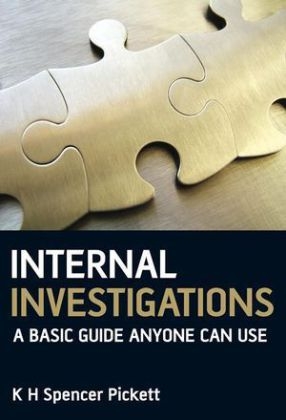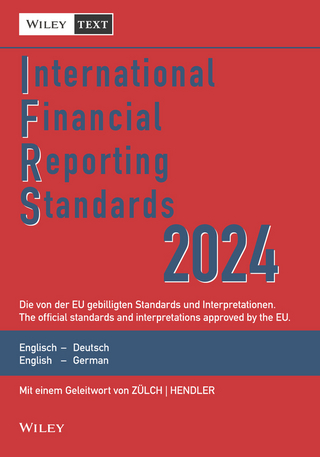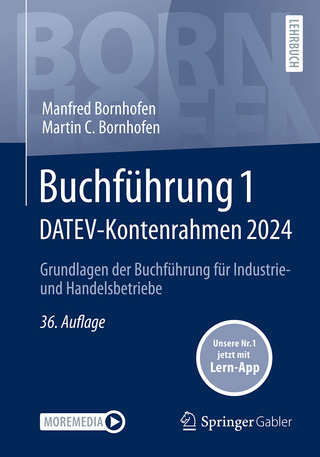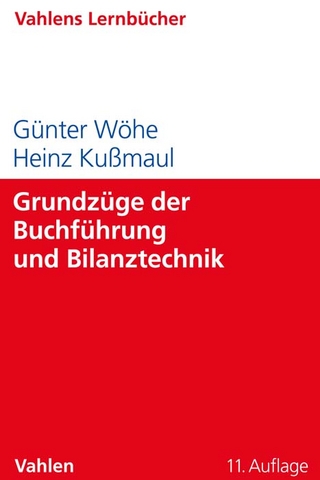
Internal Investigations - a Basic Guide Anyone Canuse
John Wiley & Sons Ltd (Verlag)
978-0-470-77968-2 (ISBN)
- Titel ist leider vergriffen;
keine Neuauflage - Artikel merken
KH Spencer Pickett is the author of 12 books published by John Wiley and Sons (Inc and UK), and a lecturer in internal auditing, risk management and investigations. He is a member of ACCA Corporate Governance and Risk Management Committee and of ACCA Internal Audit Members Network, and an executive committee member of the UK's Control Risk Self Assessment Forum.
1 The context. 1.1 Why investigations? 1.2 Investigate what? 1.3 The line manager's role. 1.4 A Basic standard. 1.5 Using the Basic standard. 1.6 To close. Basic guidance. 2 Corporate accountability. 2.1 Why accountability? 2.2 Links to governance. 2.3 The outline TOR. 2.4 Focusing on results. 2.5 How big is the issue? 2.6 Complaints. 2.7 Staff discipline. 2.8 Fraud. 2.9 Health and safety. 2.10 Breach of procedure. 2.11 Whistleblowing. 2.12 To close. Basic guidance. 3 Initial planning 3.1 Why planning? 3.2 Fact finding. 3.3 The quick fix. 3.4 Setting the detailed TOR. 3.5 Locating hot spots. 3.6 Establishing tasks. 3.7 The sponsor. 3.8 Appointing the lead investigator. 3.9 Other roles and responsibilities. 3.10 Resources. 3.11 Access rights. 3.12 Planning and control. 3.13 Publicity. 3.14 A short example. 3.15 To close. Basic guidance. 4 Basic fieldwork. 4.1 Why fieldwork? PART 4.I ASCERTAINING THE ISSUES. 4.2 Considering the issues in more detail. 4.3 Understanding the processes and operations. 4.4 Practical examples. 4.5 Diary of the investigation. 4.6 Exploring Example 10. 4.7 Moving to the next stage. PART 4.II SUBSTANTIATING THE CLAIMS. 4.8 Considering claims. 4.9 What is good evidence? 4.10 Sources of evidence. 4.11 Dirty tricks? 4.12 Using samples. 4.13 Setting an aim for the exercise. 4.14 Further practical examples. 4.15 Rules of evidence. 4.16 Establishing the context. 4.17 Exploring Example 10. 4.18 Moving to the next stage. PART 4.III INFERRING THE IMPLICATIONS. 4.19 Getting to the implications. 4.20 What about politics? 4.21 The Evidence 'C' Scale. 4.22 Other considerations. 4.23 Further practical examples. 4.24 Exploring Example 10. 4.25 To close. Basic guidance. 5 Basic fieldwork tools - interviewing. 5.1 Why interviewing? 5.2 Four dimensions of rapport. 5.3 Open forum inquiry panels. 5.4 Interviews and the Basic model. 5.5 Preparing the interview. 5.6 More on structure. 5.7 Getting results. 5.8 Exploring Example 10. 5.9 Is it that easy? 5.10 To close. Basic guidance. 6 Communicating results. 6.1 Why communications? 6.2 Types of reports. 6.3 Structuring the report. 6.4 Timeline of events. 6.5 The investigator's opinion. 6.6 Recommendations. 6.7 Recommending better internal controls. 6.8 Risk management. 6.9 Exploring Example 10. 6.10 To close. Basic guidance 7 Quality assurance. 7.1 Why quality assurance? 7.2 Ensuring consistency. 7.3 Establishing a Basic approach. 7.4 Quality assurance checklists. 7.5 Standardised documentation. 7.6 It's basically simple. 7.7 To close. 8 Beyond basics. 8.1 Why a risk management culture? 8.2 Risk scanning. 8.3 Establishing conduct. 8.4 Establishing controls. 8.5 Corporate reputation. 8.6 To close. Index.
| Verlagsort | Chichester |
|---|---|
| Sprache | englisch |
| Maße | 162 x 235 mm |
| Einbandart | gebunden |
| Themenwelt | Wirtschaft ► Betriebswirtschaft / Management ► Rechnungswesen / Bilanzen |
| Schlagworte | Revision (Wirtschaft) |
| ISBN-10 | 0-470-77968-3 / 0470779683 |
| ISBN-13 | 978-0-470-77968-2 / 9780470779682 |
| Zustand | Neuware |
| Haben Sie eine Frage zum Produkt? |
aus dem Bereich


